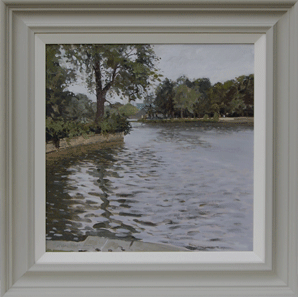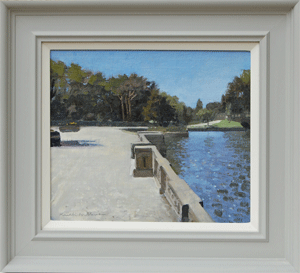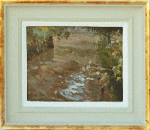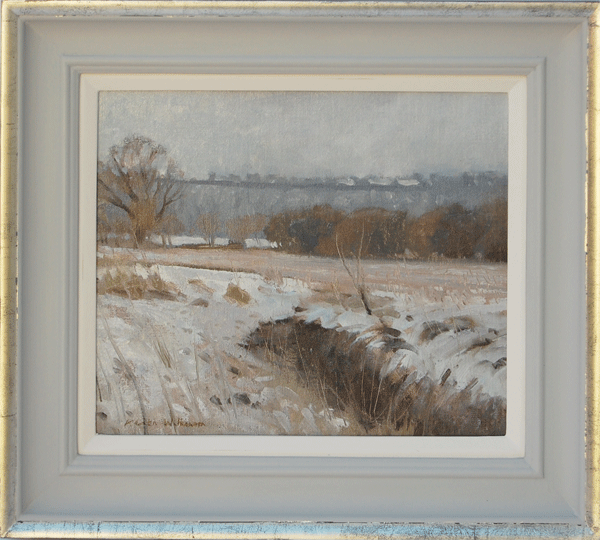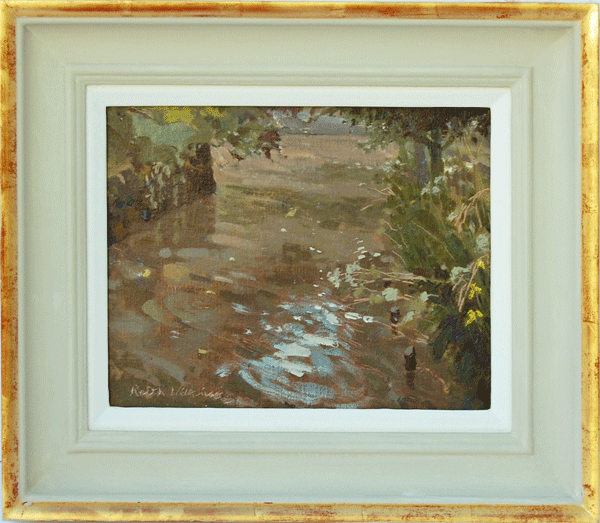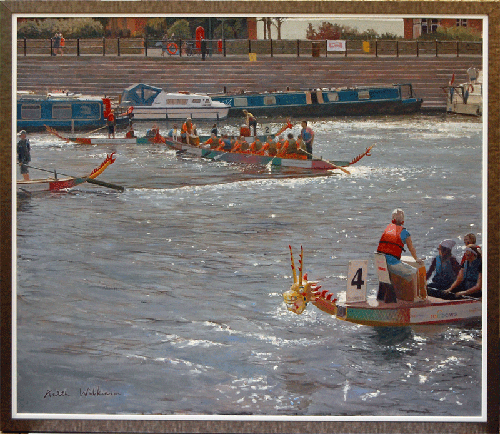I always welcome the opportunity to work alongside artists whether they are budding amateurs or established professionals. Being an exhibiting aritist myself I am uniquely qualified to see framing from both the artists and the framers viewpoint. I understand the need to present your artwork in the most appropriate way to optimise the chance of being exhibited and ultimately selling your art.
For established professionals making consistent sales, the position is perhaps clearest. Normally, in this instance, even the cost of a high end framing represents only a small percentage of the resale value and the full cost of having the picture professionally framed can be justified. The artist’s time is freed up to create more artwork and everyone benefits – the artist, the framer and the art buyer.
For the artist earlier in their career things are a little trickier. You know that to secure more sales your work must be presented in its best light. You may even realise that by investing in better framing you will increase the perceived value of your work and increase the chance of securing that sale. But if the piece doesn’t sell quickly (or at all) what about all that capital tied up in frames? With doubts like this it is no wonder I see so many exhibitions where perfectly saleable pieces have been shoehorned into cheap, ill fitting, readymade frames that send out totally the wrong message about the piece and its creator.
Before we explore some solutions now would be a good time to explain a little bit how picture framers work and how this impact on the price you pay. Ignoring the amateur framer working from his garage, broadly speaking there are three types of framer who will make frames to your individual requirements. Contract framers, high street bespoke framers and more specialised framers working out of their own workshops.
Contract framers tend to work from units away from the high street. They work on smaller margins per frame but to get their best price you will need to order a number of frames of the same size and style. If you are someone who works to the same format and you are producing sufficient work this may work for you.
The typical high street bespoke framer, on the other hand, makes individual frames to order. Typically, they will offer mouldings and mounts from several manufacturers and in many styles. Without the economy of multiples and with large overheads of high street rent and business rates this is probably the most expensive option.
The third category is is bespoke framers working from their own workshops. These may be specialists in one particular area such as water gilded frames or sports memorabilia framing or they may be more generalists offering a full range of styles and types of framing to all who come through the door. In common with the high street framer their income is derived largely from their labour. This is a very important point to understand. A large proportion of the amount you pay to a framer will be for his time and frame making is time consuming. It follows then that if you can reduce the amount of time that a picture framer has to spend on your frames the better price he will be able to offer.
Obviously I can’t speak for other picture framers but I am prepared to work with an artist any way he sees fit. Here are some suggestions as to how you can reduce the amount of time I spend on your frames:
- Order skeleton frames only – you do the rest. This represents the largest saving. This option is probably best reserved for works that don’t need glazing such as oil paintings.
- Order fame and glazing – you cut the mount and assemble
- Order frame, mount and glazing but you mount the picture yourself
- Learn frame finishing – a lot can be done with waxes, stains and colourwashes on relatively inexpensive plain wood mouldings. For the more adventurous and determined there is a great deal of satisfaction to be gained by learning to gild your own frames (if you are interested in this I may be able to help – give me a call)
- Order multiples – once the guillotine and the mount cutter is set it is much quicker to produce several frames of the same dimensions
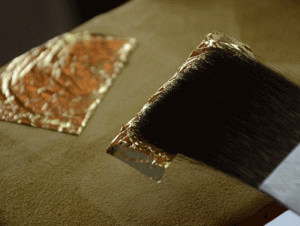
Gilding can be very rewarding to learn

